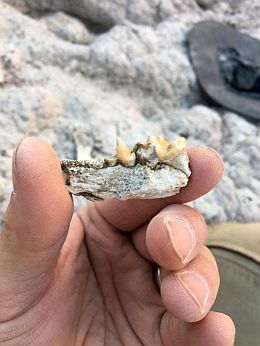Zacatecas, Mexico - An ancient sea otter fossil found in central Mexico suggests mammals once followed an east-to-west migration route from Florida to California.
The fossil, which scientists described in the journal Biology Letters, is the first piece of hard evidence offered in support of a transcontinental migration route theorized by researchers at the University of Buffalo.
 |
The fossilized jaw featured well-preserved molars, allowing researchers to identify the specimen as belonging to the ancient sea otter species Enhydritherium terraenovae. Nearly identical teeth have been recovered from the coasts of both California and Florida, but researchers weren't sure how they crossed the continent.
Tseng believes sea otters and other mammals followed an east-to-west path along the northern edge of the Trans-Mexican Volcanic Belt during the Miocene epoch, roughly 23 million to 5.3 million years ago.
The cross-continental migration may have coincided with another larger migration, the Great American Biotic Interchange - the movement of animals from North America to South America, and vice versa, across newly formed land bridges.
Strata in Mexico could yield evidence of both migrations.
"Now that we have this evidence of these animals moving through Mexico, we can now look for evidence of other animals doing the same," Tseng said.
Tseng understands some researchers will be skeptical of his hypothesis, but he hopes future digs will offer further proof of east-to-west mammal migrations.
"We are aware it is a single discovery," he said. "It essentially opens up a can of worms. We are throwing a different factor in. We now have a connection between Florida and California, and it's not in a straight line."
Original article

